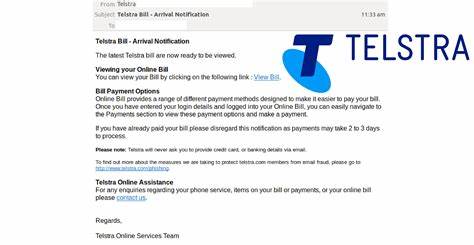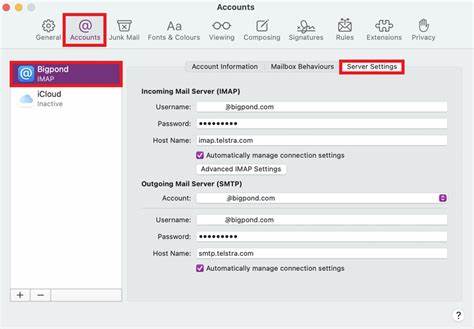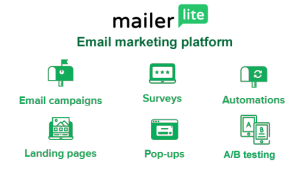Email communication is a critical aspect of modern business operations, and ensuring the security and reliability of email services is of utmost importance. Telstra, a leading telecommunications provider in Australia, has implemented various measures to enhance the security and deliverability of emails sent through its network, including the enforcement of unauthenticated traffic limits. In this article, we will delve into the concept of unauthenticated traffic, the importance of email authentication, Telstra’s policies and limits, and best practices for maintaining a secure and compliant email infrastructure.
Understanding Unauthenticated Traffic
Unauthenticated traffic refers to email messages that are sent without proper authentication mechanisms in place. This means that the sender’s identity and domain cannot be verified, making it difficult to determine the legitimacy of the email. Unauthenticated traffic can be a significant source of spam, phishing, and other malicious email activities, which can negatively impact the overall email ecosystem.
When an email message is sent without proper authentication, it becomes difficult for receiving email servers to determine whether the message is legitimate or part of a malicious campaign. Cybercriminals often exploit this vulnerability by spoofing the sender’s address, making it appear as if the email is coming from a trusted source. This can lead to a range of email-based threats, such as phishing attacks, business email compromise (BEC) scams, and the distribution of malware.
By allowing unauthenticated traffic, email service providers like Telstra risk their own reputation and the overall deliverability of emails sent through their network. Receiving email providers may be more inclined to filter or block messages from Telstra’s network if a significant amount of unauthenticated traffic is detected, as they aim to protect their users from potential threats.
The Importance of Email Authentication
Email authentication is a critical component of modern email security practices. By implementing robust authentication mechanisms, businesses can ensure that their emails are recognized as legitimate and are less likely to be flagged as spam or blocked by receiving email providers. Email authentication also helps to protect recipients from falling victim to phishing and other email-based scams.
When emails are properly authenticated, receiving email servers can verify the sender’s identity and domain, ensuring that the message is legitimate and not part of a malicious campaign. This helps to build trust in email communications, as recipients can have confidence that the message they receive is from a trusted source.
Furthermore, email authentication plays a crucial role in maintaining email deliverability. Receiving email providers often use authentication protocols as a key factor in determining whether to accept or reject incoming messages. If a sender’s emails consistently fail authentication checks, their messages may be filtered or blocked, resulting in reduced email deliverability and potential missed business opportunities.
Telstra’s Email Authentication Policies
Telstra, as a responsible email service provider, has implemented several email authentication protocols to enhance the security and deliverability of emails sent through its network. These protocols include:
Sender Policy Framework (SPF)
SPF allows domain owners to specify which mail servers are authorized to send emails on behalf of their domain, helping to prevent email spoofing. By publishing an SPF record in their domain’s DNS settings, Telstra and its customers can ensure that only authorized mail servers are sending emails from their domain, reducing the risk of email spoofing and increasing the likelihood of successful email delivery.
DomainKeys Identified Mail (DKIM)
DKIM is a cryptographic signature that is added to the email header, allowing receiving email servers to verify the authenticity of the email and the domain it was sent from. Telstra’s implementation of DKIM helps to ensure that emails sent through its network are recognized as legitimate, even if the sender’s domain is not the same as the Telstra domain.
Domain-Based Message Authentication, Reporting, and Conformance (DMARC)
DMARC is a protocol that builds upon SPF and DKIM, providing a way for domain owners to publish their email authentication policies and receive reports on the status of their domain’s email authentication. Telstra’s adoption of DMARC allows its customers to monitor and manage the email authentication status of their domains, enabling them to identify and address any issues that may arise.
By implementing these email authentication protocols, Telstra aims to enhance the overall security and deliverability of emails sent through its network, helping to protect its customers and the broader email ecosystem from email-based threats.
Telstra’s Unauthenticated Traffic Limits
The Purpose of Unauthenticated Traffic Limits
Telstra’s unauthenticated traffic limits are designed to maintain the integrity and deliverability of its email services by reducing the amount of potentially malicious or unwanted email traffic. By imposing these limits, Telstra aims to ensure that its network remains a trusted and reliable platform for email communication, protecting both its customers and the broader email ecosystem from the negative impacts of unauthenticated traffic.
Understanding Telstra’s Limits
Telstra imposes specific limits on the volume of unauthenticated email traffic that can be sent through its network. These limits are based on various factors, including the size of the email domain, the sender’s reputation, and the overall email traffic patterns. Telstra monitors and analyzes the email traffic flowing through its network to identify anomalies and potential threats, and then adjusts the unauthenticated traffic limits accordingly.
For smaller email domains, Telstra may impose a relatively low limit on unauthenticated traffic, as these domains are more vulnerable to being exploited for spam or phishing campaigns. Conversely, larger domains with a proven track record of sending legitimate email traffic may be granted higher unauthenticated traffic limits, as Telstra can have more confidence in the legitimacy of their email communications.
Telstra also considers the sender’s reputation when setting unauthenticated traffic limits. Domains with a history of sending high-quality, authenticated email are more likely to be granted higher limits, while domains with a history of sending spam or engaging in other malicious activities may be subject to stricter limits.
The Impact of Exceeding Limits
Exceeding Telstra’s unauthenticated traffic limits can result in email delivery issues, such as messages being delayed, filtered, or even rejected. This can have significant consequences for businesses relying on timely and reliable email communication, as it can lead to missed business opportunities, customer dissatisfaction, and potential reputational damage.
When a domain exceeds its unauthenticated traffic limits, Telstra may temporarily or permanently restrict the domain’s ability to send email through its network. This could mean that some or all of the domain’s email messages are placed in a quarantine queue, delayed in delivery, or even blocked entirely. In some cases, Telstra may also require the domain owner to implement additional email authentication measures before lifting the restrictions.
The impact of exceeding unauthenticated traffic limits can be far-reaching, as it not only affects the individual domain but can also contribute to a broader decline in email deliverability and trustworthiness. Receiving email providers may become more cautious about accepting email traffic from Telstra’s network if they perceive a higher risk of malicious or unwanted messages, leading to further delivery issues for Telstra’s customers.
Best Practices for Email Authentication
Implementing SPF, DKIM, and DMARC
To ensure compliance with Telstra’s email authentication policies and maintain the deliverability of their email communications, businesses should implement SPF, DKIM, and DMARC on their email domains. This involves configuring the necessary DNS records and ensuring that the email infrastructure is properly set up to support these protocols.
Setting up SPF records involves specifying which mail servers are authorized to send emails on behalf of the domain, helping to prevent email spoofing. DKIM implementation requires configuring the email server to add a cryptographic signature to outgoing messages, allowing receiving servers to verify the authenticity of the email. DMARC, on the other hand, enables domain owners to publish their email authentication policies and receive detailed reports on the status of their domain’s email authentication.
By implementing these email authentication protocols, businesses can demonstrate to Telstra and other receiving email providers that their email traffic is legitimate and trustworthy, reducing the risk of their messages being filtered or blocked.
Monitoring and Troubleshooting
Regularly monitoring the email authentication status and troubleshooting any issues that arise is crucial for maintaining a secure and compliant email infrastructure. Businesses can utilize various tools and services to monitor their email authentication setup, such as DMARC reporting tools, email deliverability monitoring services, and Telstra’s own email authentication support resources.
By closely monitoring their email authentication status, businesses can quickly identify and address any problems that may arise, such as misconfigured DNS records, issues with their email infrastructure, or changes in Telstra’s unauthenticated traffic limits. Prompt action in response to these issues can help ensure the continued deliverability of their email communications.
Tips for Avoiding Unauthenticated Traffic
Using a Reputable Email Provider
Choosing a reputable email service provider, such as Telstra, that offers robust email authentication capabilities and support can help businesses avoid issues with unauthenticated traffic. Telstra’s commitment to email security and its implementation of industry-standard authentication protocols can provide businesses with the necessary tools and expertise to maintain a secure and compliant email infrastructure.
Keeping Email Software Up-to-Date
Ensuring that all email software and platforms are kept up-to-date with the latest security patches and updates can help mitigate the risk of email-based threats and improve overall email deliverability. Outdated software can contain vulnerabilities that cybercriminals can exploit to bypass email authentication measures, leading to the generation of unauthenticated traffic.
By regularly updating their email software, businesses can ensure that they are taking advantage of the latest security features and bug fixes, helping to protect their email communications from potential threats and maintain compliance with Telstra’s unauthenticated traffic limits.
Avoiding Phishing and Spam
Implementing strong email security measures, such as spam filtering and anti-phishing protocols, can help businesses avoid sending or receiving unauthenticated email traffic. By proactively detecting and blocking suspicious email messages, businesses can reduce the risk of their domain being used for malicious activities, which could lead to exceeded unauthenticated traffic limits and delivery issues.
Additionally, educating employees on the importance of email security and the recognition of phishing attempts can further strengthen a business’s defenses against email-based threats, ultimately helping to maintain the integrity and deliverability of their email communications.
FAQs
Q1: What is unauthenticated email traffic?
Unauthenticated email traffic refers to email messages that are sent without proper authentication mechanisms, making it difficult to verify the sender’s identity and domain. This type of email traffic is often associated with spam, phishing, and other malicious activities.
Q2: Why is email authentication important?
Email authentication is important because it helps to ensure the legitimacy of email communications, protect against email-based threats like phishing and spam, and improve the overall deliverability of emails. By implementing authentication protocols, businesses can build trust with recipients and maintain a positive reputation with email service providers like Telstra.
Q3: What email authentication protocols does Telstra use?
Telstra uses the following email authentication protocols: Sender Policy Framework (SPF), DomainKeys Identified Mail (DKIM), and Domain-Based Message Authentication, Reporting, and Conformance (DMARC). These protocols work together to verify the sender’s identity and domain, and help Telstra maintain the security and deliverability of email communications on its network.
Q4: What are Telstra’s unauthenticated traffic limits?
Telstra imposes specific limits on the volume of unauthenticated email traffic that can be sent through its network. These limits are based on various factors, including the size of the email domain, the sender’s reputation, and the overall email traffic patterns. Exceeding these limits can result in email delivery issues, such as messages being delayed, filtered, or even rejected.
Q5: What happens if I exceed Telstra’s unauthenticated traffic limits?
Exceeding Telstra’s unauthenticated traffic limits can have significant consequences for businesses relying on timely and reliable email communication. It can lead to email delivery issues, such as messages being delayed, filtered, or even rejected. This can result in missed business opportunities, customer dissatisfaction, and potential reputational damage.
Q6: How can I implement SPF, DKIM, and DMARC on my email domain?
To implement SPF, DKIM, and DMARC on your email domain, you’ll need to configure the necessary DNS records and ensure that your email infrastructure is properly set up to support these protocols. This may involve working with your email service provider or a cybersecurity professional to ensure the correct configuration and ongoing monitoring of your email authentication setup.
Q7: How can I monitor the email authentication status of my domain?
You can utilize various tools and services to monitor the email authentication status of your domain, such as DMARC reporting tools, email deliverability monitoring services, and Telstra’s own email authentication support resources. Regular monitoring and troubleshooting of any issues that arise can help you maintain a secure and compliant email infrastructure.
Q8: Why is it important to use a reputable email provider like Telstra?
Using a reputable email service provider like Telstra can help businesses avoid issues with unauthenticated traffic and maintain the deliverability of their email communications. Telstra’s commitment to email security, including the implementation of industry-standard authentication protocols, can provide businesses with the necessary tools and expertise to maintain a secure and compliant email infrastructure.
Q9: How can I keep my email software up-to-date to avoid unauthenticated traffic?
Ensuring that all email software and platforms are kept up-to-date with the latest security patches and updates can help mitigate the risk of email-based threats and improve overall email deliverability. Outdated software can contain vulnerabilities that cybercriminals can exploit, leading to the generation of unauthenticated traffic.
Q10: What measures can I take to avoid phishing and spam, which can contribute to unauthenticated traffic?
Implementing strong email security measures, such as spam filtering and anti-phishing protocols, can help businesses avoid sending or receiving unauthenticated email traffic. Additionally, educating employees on the importance of email security and the recognition of phishing attempts can further strengthen a business’s defenses against email-based threats.
Conclusion
The Importance of Email Authentication
Email authentication is a crucial aspect of modern email security and deliverability. By implementing robust authentication mechanisms, businesses can ensure the legitimacy of their email communications, protect against email-based threats, and improve the overall reliability of their email infrastructure. Telstra’s email authentication policies and unauthenticated traffic limits play a vital role in maintaining the integrity and trustworthiness of the email ecosystem.
Additional Resources
For more information on email authentication and Telstra’s policies, please visit the following resources:







